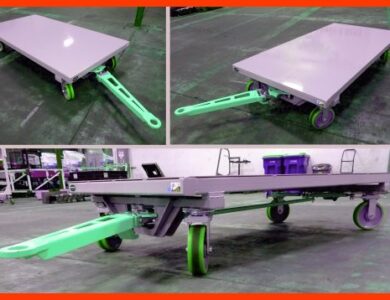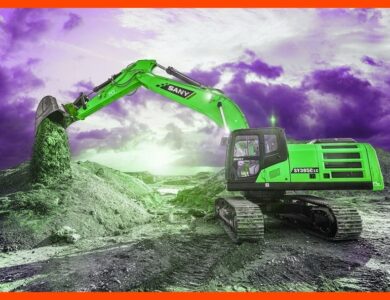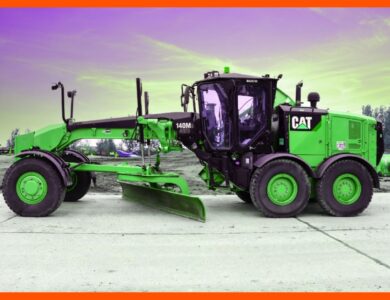Heavy Equipment
The Ultimate Guide to Heavy Equipment A Comprehensive Overview
The Ultimate Guide to Heavy Equipment A Comprehensive Overview

The Ultimate Guide to Heavy Equipment A Comprehensive Overview
When it comes to heavy equipment, the construction and industrial sectors rely on a diverse range of machinery and tools to get the job done efficiently and effectively. Whether you’re a seasoned industry professional or a novice looking to gain insights into the world of heavy equipment, this comprehensive guide will provide you with the essential information you need. We’ll cover a wide spectrum of heavy machinery, from bulldozers to cranes, and discuss their applications, advantages, and the key factors that make them indispensable in various industries.
Understanding the Importance of Heavy Equipment
Heavy equipment plays a pivotal role in numerous industries, including construction, mining, agriculture, and more. These powerful machines are essential for tasks that require precision, strength, and efficiency. Let’s delve into the various types of heavy equipment and explore their functions.1. Bulldozers: Shaping the Earth
Bulldozers are the workhorses of the construction industry. These robust machines are equipped with a large metal blade that can push, pull, and level various materials. From clearing land for new projects to grading and excavating, bulldozers are versatile and essential for any construction site.2. Excavators: Precision Diggers
Excavators are used for digging trenches, foundations, and holes with precision. Their hydraulic systems and attachments make them ideal for tasks like digging, lifting, and even demolition. With the right attachments, an excavator can perform a wide range of functions, making it an indispensable tool in the construction and mining sectors.3. Loaders: The Heavy Lifters
Loaders are designed for loading and moving materials like gravel, sand, and debris. They come in various sizes and configurations, such as wheel loaders and skid-steer loaders, making them suitable for a wide array of applications. These machines are frequently seen in industries like agriculture, landscaping, and construction.4. Cranes: Lifting the Impossible
Cranes are synonymous with lifting heavy loads to great heights. They are crucial in construction and manufacturing industries for tasks like erecting buildings, handling heavy machinery, and even salvaging large objects. Cranes are available in several types, including tower cranes, mobile cranes, and crawler cranes, each designed for specific applications.5. Backhoes: Versatile Earth Movers
Backhoes combine the functionalities of a loader and an excavator. They are excellent for digging, trenching, and material handling, making them invaluable on construction sites, farms, and utility projects. Their versatility and compact size make them suitable for a range of tasks.The Advantages of Heavy Equipment
Now that we’ve explored the primary types of heavy equipment let’s discuss the advantages they offer in various industries.1. Efficiency
Heavy equipment is known for its ability to complete tasks efficiently, reducing the time required for manual labor and increasing productivity. Construction projects that use heavy machinery are typically completed faster, saving both time and money.2. Precision
The precision of heavy equipment, especially excavators and bulldozers, ensures that tasks are carried out with accuracy. This is crucial in construction and excavation work where precise measurements and positioning are paramount.3. Safety
Heavy equipment operators are trained professionals, and their machines are equipped with numerous safety features. This reduces the risk of accidents on construction sites and ensures the safety of workers and bystanders.4. Versatility
The versatility of heavy equipment allows it to be used in various industries, making it a sound investment for businesses. Whether you need to clear land, dig trenches, or move heavy materials, there’s a specific machine for every task.Key Factors for Selecting the Right Heavy Equipment
Selecting the right heavy equipment is essential for the success of any project. Here are the key factors to consider when making your decision:1. Project Requirements
Identify the specific needs of your project. Consider factors like the size of the project, the terrain, and the materials you’ll be working with. This will help you determine which heavy equipment is best suited for the job.2. Budget
Your budget will play a significant role in determining the type and size of heavy equipment you can acquire. Consider both the initial purchase price and ongoing operating costs.3. Operator Skill
Ensure that your operators are trained and experienced in handling the chosen equipment. This is vital for safety and productivity on your project.4. Maintenance
Regular maintenance is essential to keep heavy equipment in optimal working condition. Factor in maintenance requirements and costs when making your choice.5. Environmental Impact
Consider the environmental impact of the equipment you choose. Some machines are more eco-friendly than others, which may be a priority for your project or business.Maintenance and Care for Heavy Equipment
Maintenance is a critical aspect of ensuring that your heavy equipment continues to operate at its peak efficiency. Neglecting maintenance can lead to costly breakdowns and downtime. Here are some essential maintenance tips for keeping your heavy machinery in top shape:1. Regular Inspections
Frequent inspections of your equipment can help identify any issues before they escalate. Inspect key components such as the engine, hydraulics, tires, and electrical systems. Address any problems promptly to avoid costly repairs.2. Scheduled Servicing
Follow a strict servicing schedule as recommended by the equipment manufacturer. This includes changing filters, oil, and other fluids, as well as replacing worn-out parts. Regular servicing can prolong the life of your equipment.3. Operator Training
Ensure that your equipment operators are well-trained not only in the operation of the machinery but also in basic maintenance tasks. They should know how to identify and report issues, as well as perform routine checks.4. Proper Storage
When heavy equipment is not in use, it should be stored in a secure, dry location. Exposure to the elements can lead to corrosion and damage. Additionally, using protective covers can help extend the lifespan of your equipment.5. Documentation
Maintain detailed records of all maintenance and repairs performed on your heavy equipment. This documentation is valuable for tracking the history of the machinery and can also be useful when selling or trading it.Renting vs. Buying Heavy Equipment
A crucial decision that many businesses face is whether to purchase or rent heavy equipment. Each option has its advantages and drawbacks, and the choice will depend on your specific circumstances. Here’s a closer look at the considerations for both options:Renting Heavy Equipment
Renting heavy equipment can be a cost-effective choice, especially for short-term projects or when you need a specific piece of machinery for a limited time. Some benefits of renting include:- No upfront purchase cost.
- Access to a wide variety of equipment.
- Reduced maintenance responsibilities.
Buying Heavy Equipment
Purchasing heavy equipment provides the advantage of long-term ownership and asset value. Some key benefits of buying include:- Owning an asset that can appreciate over time.
- Complete control over maintenance and usage.
- No recurring rental costs.
The Future of Heavy Equipment
As technology advances, heavy equipment continues to evolve. Automation, telematics, and improved fuel efficiency are just a few of the developments that are shaping the future of the industry. Manufacturers are also working towards more eco-friendly and sustainable machinery. Automation, in particular, is expected to revolutionize heavy equipment operation. Autonomous vehicles and machinery can increase efficiency, reduce labor costs, and enhance safety on job sites.
URL Copied



